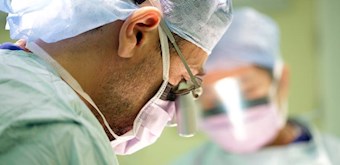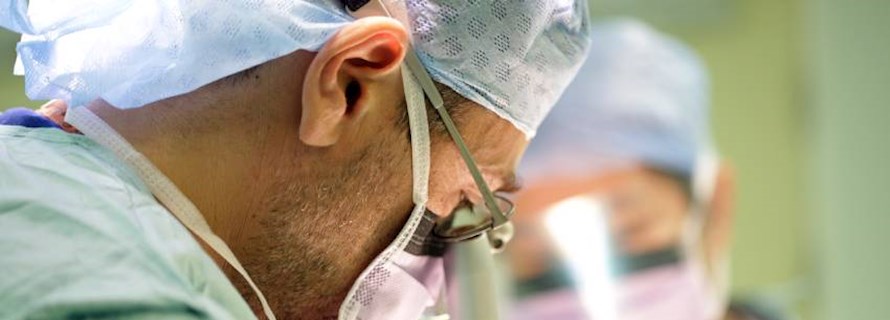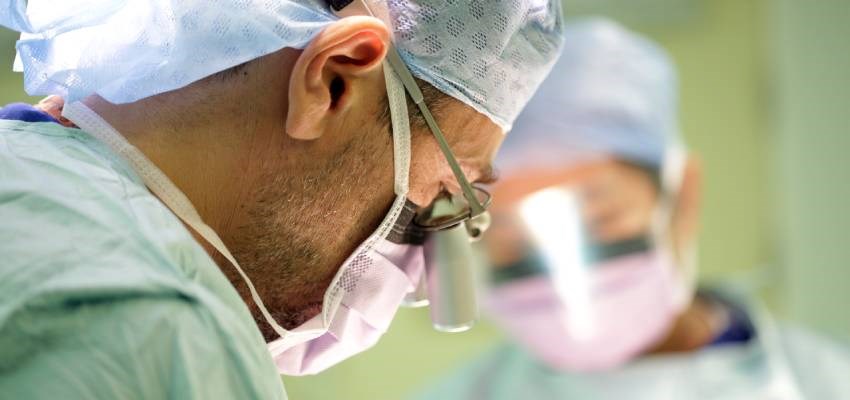Thoracic nerve decompression
Cervical rib surgery
Treating nerve compression caused by thoracic outlet syndrome. Our specialist peripheral nerve surgeon, Mr Marco Sinisi, is experienced in performing this complex nerve surgery.
What is a nerve decompression?
Trauma such as a car accident, repetitive movement such as weight-lifting and sometimes pregnancy can cause TOS. However, a main cause is cervical rib. This is a rare condition where some people are born with an extra rib growing from the neck. This presses down on the nerves and blood vessels causing pain.
TOS can be treated with physiotherapy and painkillers but if pain from trapped nerves gets worse, you may need surgery. Our peripheral nerve injury surgeons at The Wellington Hospital are leading experts at treating thoracic outlet syndrome.
Need to know
-
What happens icon plus
This procedure will be carried out under general anaesthetic, so you'll be asleep throughout. If the first rib is causing the compression (usually by trauma), the transaxillary approach is most effective. Here, your surgeon will make an incision in your chest near the rib, parting the muscles and removing part of the first rib to release the nerves and blood vessels. If a cervical rib is compressing the nerves, a cut is made in the armpit or above the collarbone. The cervical rib and connecting muscles are then removed. The area will then be closed with a dissolvable stitch. It's best to treat a cervical rib early on to reduce future nerve compression and damage. -
How to prepare icon plus
Your consultant will explain the procedure and answer any questions you might have. Because general anaesthetic is used during the procedure, you may need to fast for several hours before the operation. Your consultant will tell you how long you should avoid eating and drinking. Like all procedures, there may be some risks and side effects involved. Your consultant will explain these to you. -
Afterwards icon plus
After your operation, you'll have a drip and be given analgesic pain killers. You'll have an X-ray to make sure everything is healing well and a physiotherapist will help you move your arm. Depending on your progress, and how mobile you are, you should be discharged after two days. It’s recommended that you take regular short walks to rebuild your strength and mobility. You should be back at work within two to four weeks of surgery, and you should be able to exercise properly within four weeks. Your consultant will oversee your recovery and you'll have a follow-up appointment to check your progress.
Mr Marco Sinisi - Peripheral Nerve Specialist
At HCA Healthcare UK, we work with leading consultants to enable access to the the latest techniques and treatment.
Mr Marco Sinisi is our lead consultant for Peripheral Nerve Injuries based at The Wellington Hospital. Mr Sinisi has a comprehensive knowledge of nerve injuries and has experience in a wide range of nerve problems from trauma through to sports injuries. He is experienced in managing complex nerve conditions as well as performing complex nerve operations.




Our Locations
From complex nerve surgery to diagnostic tests and procedures, we provide exceptional care across our network of hospitals, outpatient centres and specialist clinics.
-
Peripheral Nerve Injury (PNI) Unit
The PNI Unit at The Wellington Hospital
Wellington Place
London NW8 9LE
-
The Wellington Hospital Elstree Waterfront
The Waterfront Business Park
Beaufort House, Elstree Road
Elstree WD6 3BS
Book an appointment
Our team can help with any enquiries or you can make an appointment with one of our experienced consultants.
Call us today
020 7079 4344